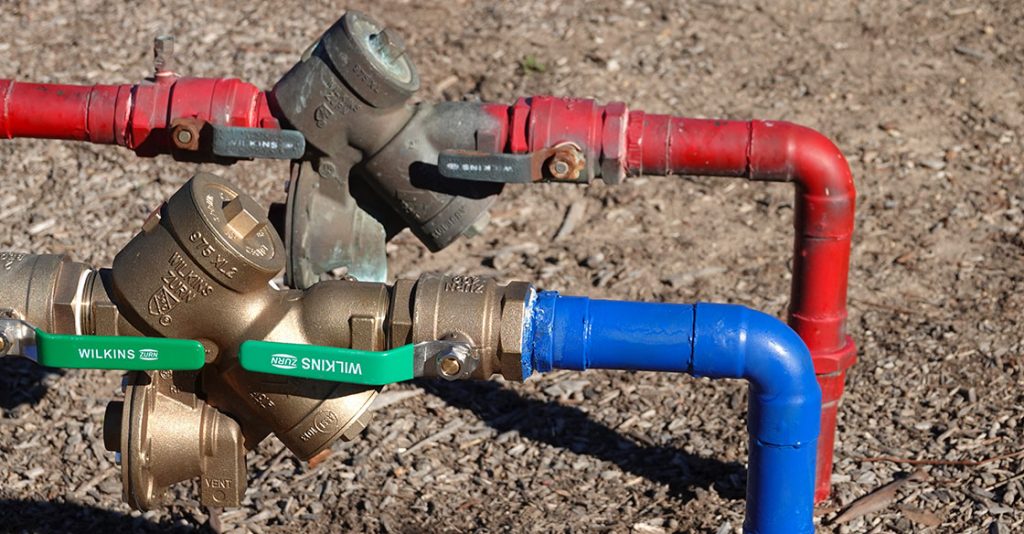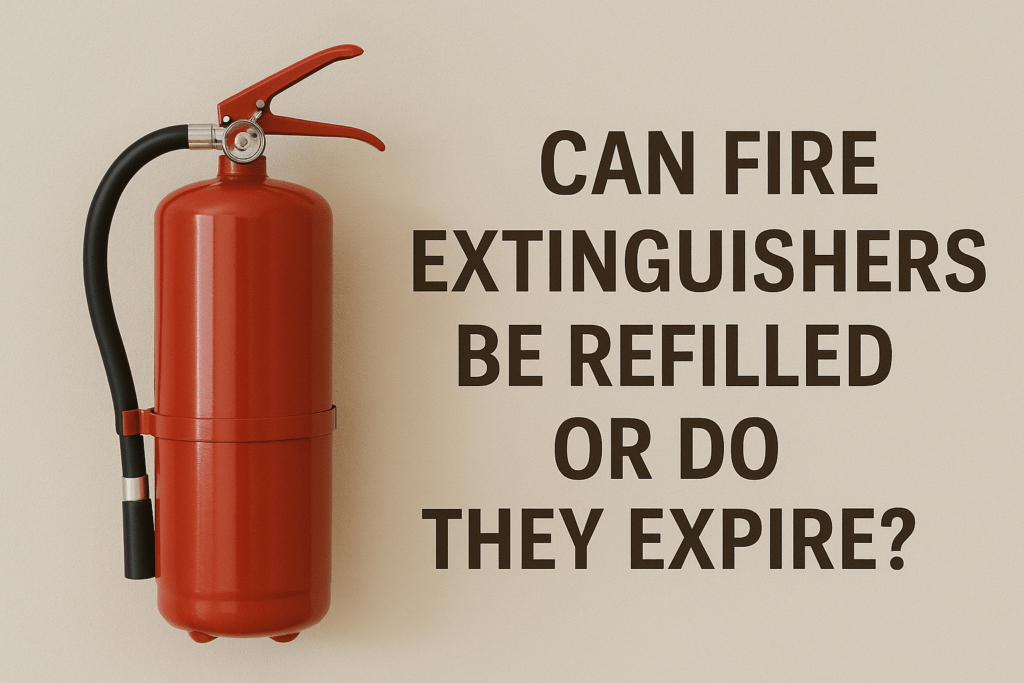Regular fire sprinkler inspections are essential for maintaining fire safety, ensuring compliance with regulations, and keeping your fire sprinklers in working order. Whether you own a commercial property, industrial facility, or residential building, understanding how often sprinkler systems need to be inspected is a critical part of your fire protection strategy.
This guide will walk you through the required inspection frequencies, the role of fire suppression systems NFPA 25, and the importance of inspection and testing of your fire sprinkler system. We’ll also cover who should inspect the system and what components must be assessed during each interval according to NFPA 25.
Nfpa 25 and its importance
The National Fire Protection Association (NFPA) created NFPA 25, the standard for the inspection, testing, and maintenance of water-based fire protection systems. It serves as the foundational guideline that governs how frequently testing should be performed. sprinkler systems need to be inspected and what elements must be tested at each stage to ensure your fire sprinklers are functioning properly.
Adhering to inspection requirements NFPA standards is not just a recommendation, it’s a legal requirement in many jurisdictions. Failing to comply with NFPA 25 can result in violations, increased liability, or even denied insurance claims in the event of a fire.
NFPA 25 ensures that fire protection systems, including sprinklers, control valves, and pipes, are inspected and tested routinely to verify their performance and reliability. According to NFPA, these inspections must be performed by qualified personnel, often a licensed fire protection technician or a fire inspector.
Sprinkler system inspection frequencies
Different parts of the fire sprinkler system must be inspected at different intervals according to NFPA 25. Here’s how often sprinklers must be inspected based on the specific system requirements and regulations for fire sprinkler systems. type of fire sprinkler system and component:
Weekly inspections
Weekly fire sprinkler inspections are typically required for systems to verify compliance with safety standards. control valves and system gauges in dry pipe, pre-action, and deluge systems. These weekly checks help verify that dry pipe valves are in the proper position and that gauges are reading within normal ranges.
Monthly inspections
For wet pipe systems, monthly inspections focus on checking system gauges. These wet pipe system gauges ensure that pressure levels remain stable, signaling that the sprinkler system is pressurized and ready to respond.
Quarterly inspections
Several key components must be checked every three months:
- Water flow alarm devices
- Valve supervisory alarm devices
- Supervisory signal devices
- Control valves
- Hydraulic nameplates
These devices should be tested quarterly to verify functionality. If they fail, the complete fire sprinkler system test must be conducted sprinkler system may not activate during an emergency. As these systems are the first line of defense for your 5 year fire sprinkler system., staying on schedule is critical.
Annual inspections
Annual fire sprinkler inspections must comply with inspection requirements are more comprehensive and should include the following components:
- Hangers and seismic bracing
- Pipes and fittings
- Information signage
- Spare sprinklers
A full inspection must be performed by a licensed fire protection technician. During this time, additional system components such as fire pumps and fire department connections should also be examined.
For more background on how your system operates, read how do fire sprinklers work.
5-year inspections
Every five years, an internal inspection of sprinkler piping must be done to identify any obstructions such as foreign materials, corrosion, or microbiological buildup.
Fire sprinkler systems need to be tested and inspected regularly also be tested every 5 years to verify the condition of sprinklers exposed to harsh environments and system gauges.
This internal inspection of sprinkler systems should include testing and tagging for accurate assessment. is essential to detect issues not visible during routine external checks.
10-year and beyond inspections
- Dry sprinklers must undergo inspections and testing of fire suppression systems. must be tested and possibly replaced every 10 years.
- Fast-response fire sprinklers should be tested at 20 years, then every 10 years.
- Standard-response fire sprinklers must be tested at 50 years, then every 10 years.
Sprinklers are required to be replaced if they fail inspection.
Qprinkler system testing intervals
In addition to inspections, testing of fire sprinkler systems must be conducted regularly:
- Quarterly: Mechanical alarm devices
- Semiannually: Vane-type and pressure switch devices
- Annually, thorough inspections of fire sprinkler systems are necessary.: Full system test, including water flow, alarm systems, antifreeze concentrations, and trip testing
- Every 5 years, a complete fire sprinkler system test is required.: Test exposed sprinklers and system gauges
If you’re not sure how to reset fire alarm system devices after testing, check out this helpful guide on how to reset fire alarm system.
Importance of regular inspections and testing
Routine fire sprinkler inspections and testing help:
- Ensure fire sprinkler systems activate during emergencies
- Maintain compliance with regulations for fire sprinkler systems mandate regular testing and tagging to ensure compliance.
- Avoid costly repairs through early detection of wear by ensuring your fire sprinklers are visually inspected.
- Extend the life of the entire fire protection system
- Support insurance claims with proper documentation and record-keeping
An annual inspection is not enough for fire sprinkler systems need regular inspections and testing. A complete inspection and testing schedule—performed by professionals—is essential to provide inspections and testing for all fire safety systems.
For more insights on fire sprinkler testing fire safety and emergency preparedness, see types of fire alarm systems and what is a fire alarm system.
Who should perform inspections?
While basic visual inspections can be conducted by trained staff, more technical sprinkler testing must be performed by a licensed fire protection technician according to NFPA 25, which includes testing and tagging.. These professionals understand the importance of inspections and testing of fire sprinkler systems fire protection services, testing and maintenance procedures, and NFPA standards.
Organizations may also employ internal fire protection technicians who are qualified to inspect the system, especially in large facilities with ongoing maintenance needs. Regardless, all personnel involved must receive proper training and certification.
Documentation and compliance
Maintaining proper inspection records is essential. All inspections, findings, and corrective actions should be logged. This documentation may be reviewed by:
- Insurance providers
- Local fire marshal
- Safety auditors
- The fire department
Failure to keep accurate records can lead to compliance violations and increased liability.
Frequency of inspections and testing
So, how often should my fire sprinkler system be inspected?
Here’s a summary:
- Weekly: Control valves and gauges for dry, pre-action, and deluge systems
- Monthly: Gauges in wet pipe systems
- Quarterly: Mechanical devices, alarms, and supervisory devices
- Annually: System-wide inspections including signage, hangers, and spare sprinklers
- Every 5 years: Internal inspection of piping, exposed sprinkler testing
- 10+ years: Lifecycle testing of sprinkler heads
These intervals meet inspection and testing requirements laid out in NFPA 25 and help ensure that your automatic fire systems function during emergencies.
If you’re unsure whether your sprinklers be inspected this quarter or next, schedule an inspection today with a trusted fire protection company. Your system is your first line of defense, and regular fire sprinkler maintenance ensures it stays ready.
For complete protection, don’t forget to pair your sprinkler system with appropriate extinguishers. Learn more about the fire inspection process and what elements must be tested at each stage. types of fire extinguishers.




